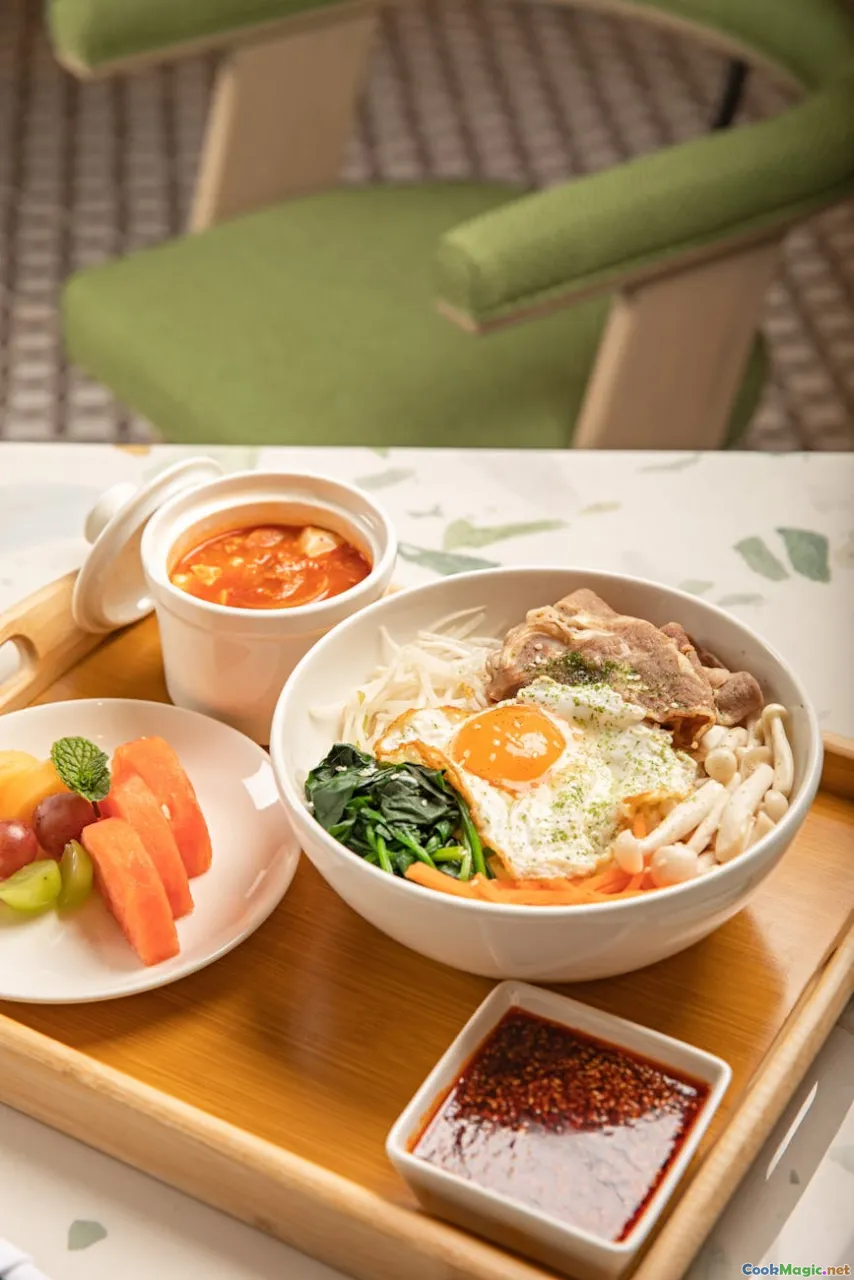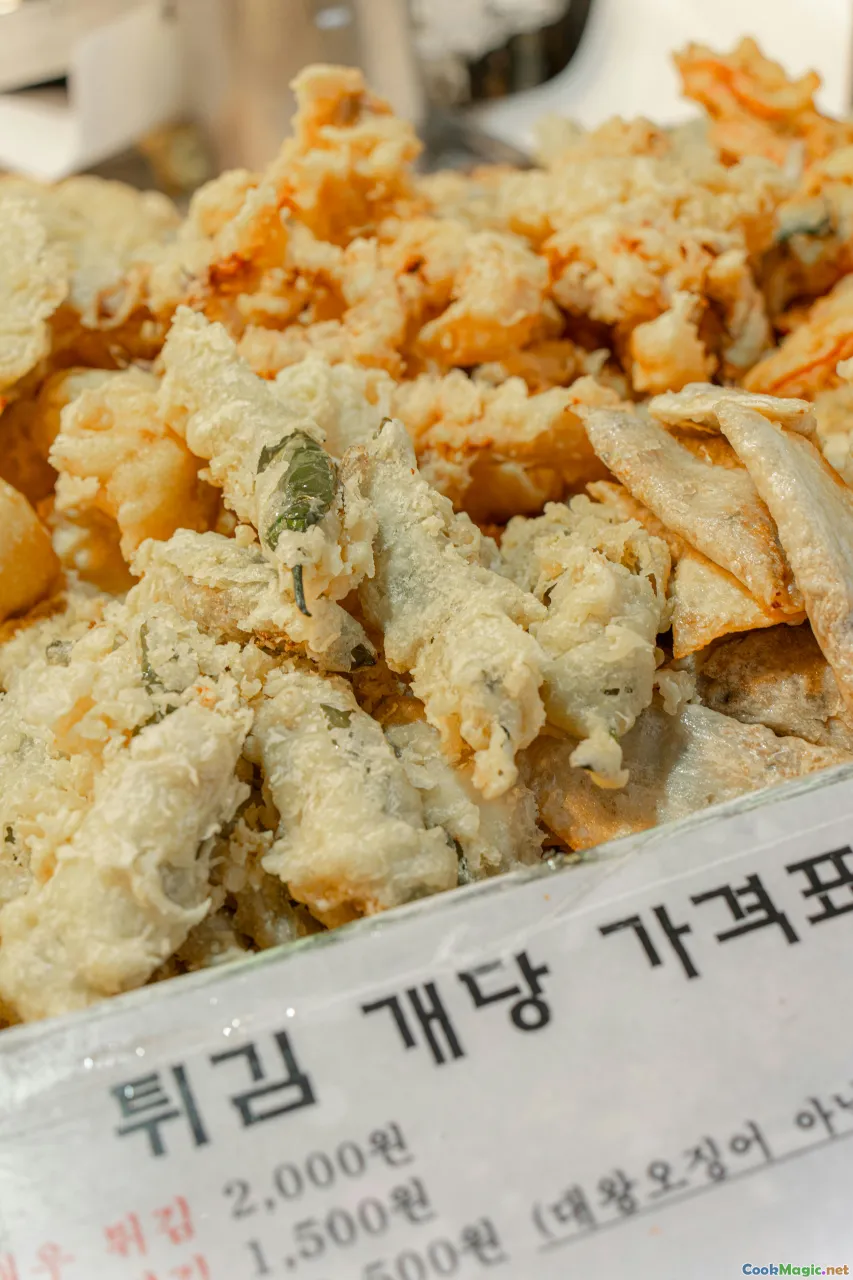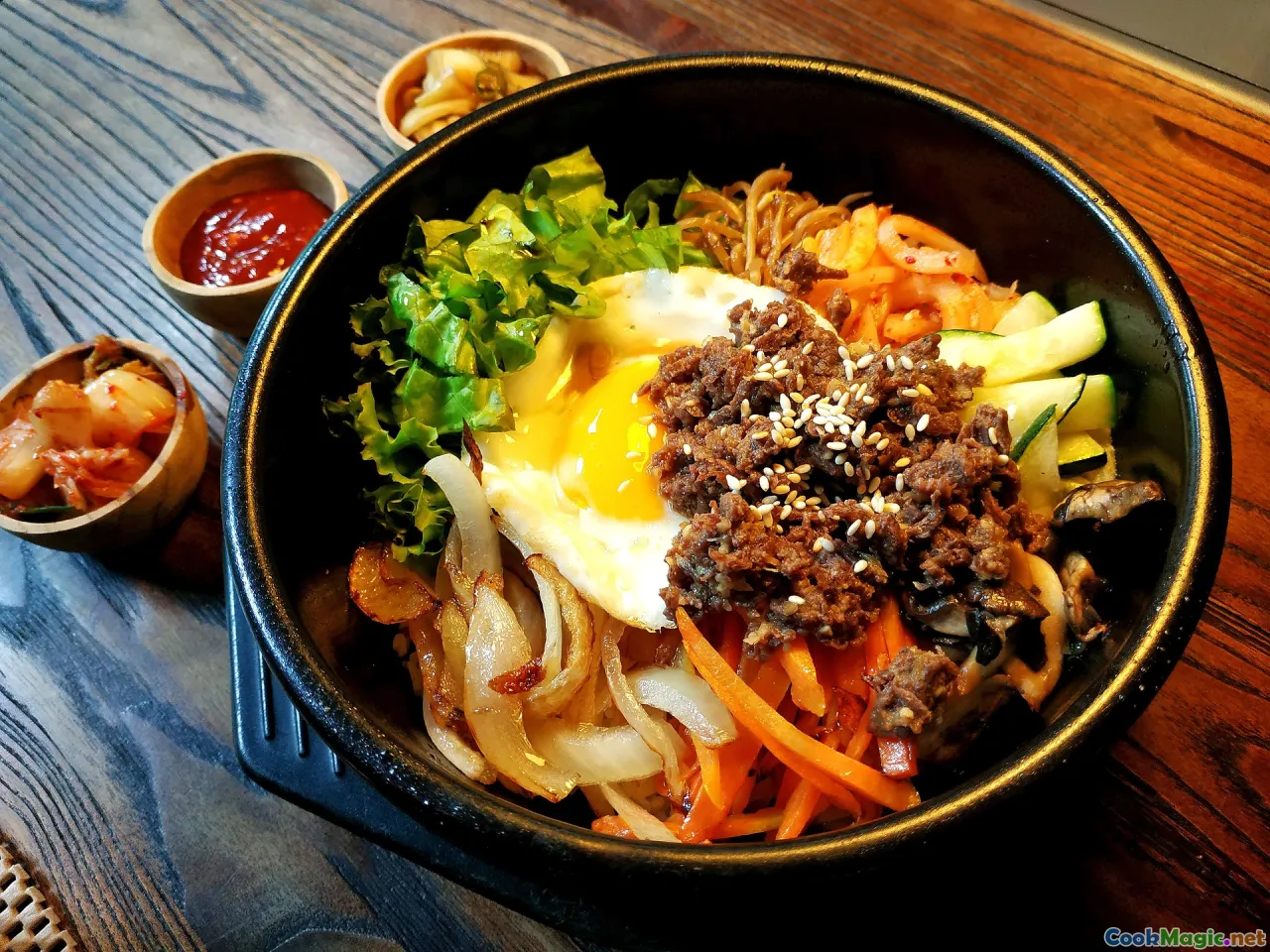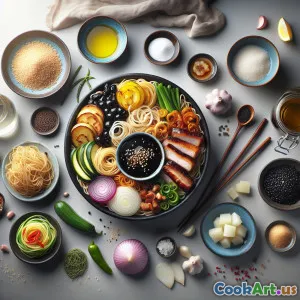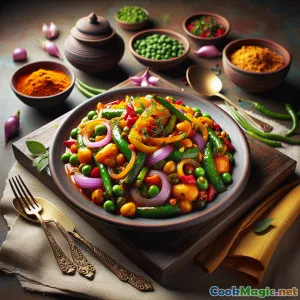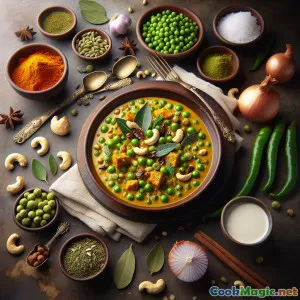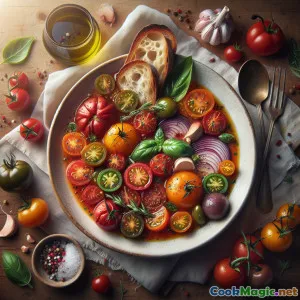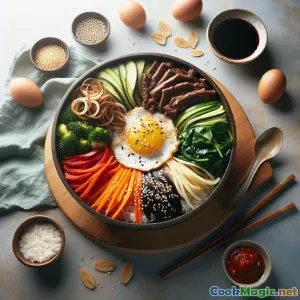
Bibimbap Korea yang Lezat: Semangkuk Nasi Berwarna-warni
(Delicious Korean Bibimbap: A Colorful Rice Bowl)
(0 Ulasan)0
817
Juni 29, 2025
Laporkan Masalah
Bahan
-
2 cups Nasi yang Dimasak
(Gunakan beras berbiji pendek untuk keaslian)
-
150 grams Daging Sapi
(Diiris tipis, bisa menggunakan daging sapi bulgogi)
-
1 medium Wortel
(Julienne)
-
1 medium Zucchini
(Julienne)
-
1 cup Bayam
(Blansir)
-
2 large Telur
(Telur mata sapi goreng matahari di atas)
-
2 tbsp Gochujang
(Pasta cabai merah Korea)
-
1 tbsp Minyak wijen
(Untuk rasa)
-
1 tbsp Kecap asin
(Untuk merendam daging sapi)
-
1 tbsp Biji wijen
(Untuk hiasan)
(Gunakan beras berbiji pendek untuk keaslian)
(Diiris tipis, bisa menggunakan daging sapi bulgogi)
(Julienne)
(Julienne)
(Blansir)
(Telur mata sapi goreng matahari di atas)
(Pasta cabai merah Korea)
(Untuk rasa)
(Untuk merendam daging sapi)
(Untuk hiasan)
Nutrisi
- Porsi: 2
- Ukuran Porsi: 1 mangkuk (350g)
- Calories: 700 kcal
- Carbohydrates: 80 g
- Protein: 30 g
- Fat: 25 g
- Fiber: 6 g
- Sugar: 5 g
- Sodium: 600 mg
- Cholesterol: 200 mg
- Calcium: 150 mg
- Iron: 3 mg
Instruksi
-
1 - Siapkan bahan-bahan:
Cuci dan iris tipis wortel dan zucchini. Blansir bayam dalam air mendidih.
-
2 - Memasak Daging Sapi:
Marinate daging sapi dalam kecap dan minyak wijen selama 10 menit, lalu tumis hingga matang.
-
3 - Tumis sayuran:
Dalam wajan, tumis wortel dan zucchini secara terpisah sampai lembut.
-
4 - Goreng Telur:
Di wajan terpisah, goreng telur mata sapi dengan kuning telur menghadap ke atas.
-
5 - Merakit Bibimbap:
Di setiap mangkuk, tempatkan satu porsi nasi, tambahkan daging sapi, sayuran, dan telur goreng. Sirami dengan gochujang dan minyak wijen.
-
6 - Sajikan:
Hiasi dengan biji wijen dan sajikan hangat, campurkan semua bahan sebelum dimakan.
Cuci dan iris tipis wortel dan zucchini. Blansir bayam dalam air mendidih.
Marinate daging sapi dalam kecap dan minyak wijen selama 10 menit, lalu tumis hingga matang.
Dalam wajan, tumis wortel dan zucchini secara terpisah sampai lembut.
Di wajan terpisah, goreng telur mata sapi dengan kuning telur menghadap ke atas.
Di setiap mangkuk, tempatkan satu porsi nasi, tambahkan daging sapi, sayuran, dan telur goreng. Sirami dengan gochujang dan minyak wijen.
Hiasi dengan biji wijen dan sajikan hangat, campurkan semua bahan sebelum dimakan.
Informasi Lebih Lanjut: Bibimbap Korea yang Lezat: Semangkuk Nasi Berwarna-warni
Bibimbap, hidangan tradisional Korea, bukan sekadar makanan; ini adalah bentuk seni. Namanya sendiri diterjemahkan menjadi 'nasi campur', dan memang begitulah keadaannya: mangkuk berwarna-warni berisi nasi yang dilapisi berbagai sayuran yang ditumis dan dibumbui, daging sapi, dan telur goreng, semuanya dicampur bersama dengan sesendok saus gochujang yang pedas. Secara historis, bibimbap adalah cara untuk memanfaatkan sisa bahan, menjadikannya hidangan praktis untuk keluarga. Setiap bahan dalam bibimbap memiliki rasa dan nilai nutrisi yang unik, menjadikannya makanan yang seimbang. Warna-warni sayuran melambangkan harmoni antara yin dan yang dalam budaya Korea, melambangkan keseimbangan dan kesehatan. Untuk pilihan vegetarian, cukup hilangkan daging sapi dan tambahkan lebih banyak sayuran atau tahu. Hidangan ini sempurna untuk dibagikan dan memungkinkan setiap orang menyesuaikan mangkuk mereka sesuai selera. Baik dinikmati di rumah maupun di restoran, bibimbap adalah pengalaman yang menyenangkan yang mempererat kebersamaan di meja makan.

